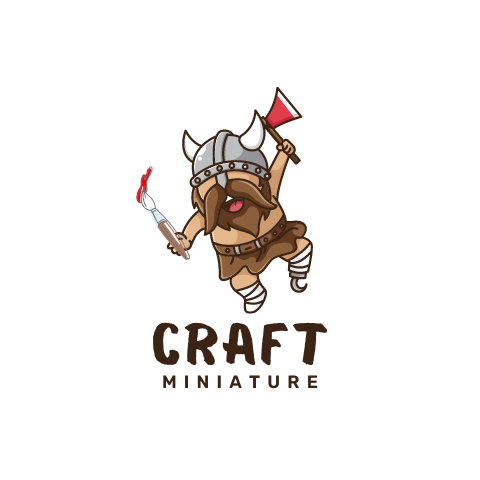Sometimes you cannot combine two model components together and need to pin them together. These situations require a pin vice to ensure it is done correctly without damaging your model.
A pin vice is a small, handheld drill that can be used for many different purposes, such as drilling small holes in metal or plastic or removing small pieces of metal or plastic.
This article will discuss the different types of pin vices available on the market and which is best suited for miniature work.

What is a pin vice, and what are its uses?
A pin vice is a small, handheld drill that can be used for many different purposes. It is most commonly used to drill small holes in metal or plastic or to remove small pieces of metal or plastic. Pin vices come in various sizes and styles, so it’s essential to choose the right one for your needs. If you’re doing miniature work, you’ll want to select a pin vice designed explicitly for that purpose.
What should I use to pin miniatures?
Many types of pinning materials are available on the market, such as brass, steel, or aluminum. Brass is the most common type of pin used for miniatures because it is strong and easy to work with. Steel and aluminum are also good options but can be more challenging.
When choosing a pinning material, it’s essential to consider the material’s strength and the miniature’s weight. For example, brass is a strong pinning material and is quite heavy. If you’re working with a very small or delicate model, you may want to choose a lighter-weight pinning material such as aluminum.
It’s also important to consider the size of the pin. The size of the pin should be appropriate for the size of the hole you need to drill. If you’re working with a tiny hole, you’ll want to choose a very thin pin. Conversely, if you’re working with a larger hole, you’ll want to select a thicker pin.
Heads up! If you are looking to pin your metal miniatures, we suggest you check out our pinning guide for models.
What are the different types of pin vices?
There are two main types of pin vices: those with a chuck and those without. Chucks hold drill bits, while those without chucks rely on friction to keep the bit in place. Chucks provide more stability and are better suited for drilling, while those without chucks are better for removing small pieces of metal or plastic.
When choosing a pin vice, you’ll also want to consider the material you’ll be working with. If you’re working with soft materials like wood or plastic, you won’t need as much power as you would for more complex materials like metal. You’ll also want to consider the size of the holes you’ll be drilling. If you’re only drilling small holes, you won’t need as much power or torque as you would for larger holes.
Which type of pin vice is best for miniature work?
You’ll want to choose a pin vice designed explicitly for that purpose for miniature work. These vices are usually smaller and more precise than other pin vices. They also typically have lower torque, which is essential for delicate work.
No matter what type of pin vice you choose, read the manufacturer’s instructions carefully before using it. This will help you avoid damage to your materials and ensure that you use the tool correctly.
How to use a pin vice?
Using a pin vice is relatively simple. If you follow the steps below, you will be able to assemble your miniatures in no time:
- First, select the drill bit you will be using. It is essential to choose the correct size drill bit for your project. If you’re not sure, err on the side of a smaller bit; it’s always easier to enlarge a hole than make one smaller.
- Next, insert the drill bit into the chuck (if your pin vice has one) or into the jaws of the vice. If you’re using a pin vice without a chuck, you may need to wrap the drill bit with tape to keep it in place.
- Now, tighten the chuck or jaws of the vice to hold the drill bit in place. You don’t want it to be too tight, or you may damage the bit.
- Finally, begin drilling your hole. Apply even pressure as you drill. If you’re removing a small piece of metal or plastic, go slowly and carefully to avoid damaging the surrounding material.
- When you’re finished, loosen the chuck or jaws of the vice and remove the drill bit. Be sure to clean the drill bit before storing it away.
With a little practice, you’ll be an expert at using a pin vice in no time!
Top Four Pin Vices
Tamiya Fine Pin Vise
This pin vice is perfect for precision work. It has a small chuck that can hold drill bits up to 0.6mm in diameter, making it ideal for drilling small holes. The Tamiya Fine Pin Vise also has a comfortable grip and an easy-to-use thumbscrew, making it easy to use for extended periods.

Pros:
- Small chuck for precision work
- Comfortable grip
- Easy to use thumbscrew
Cons:
- Not suitable for larger drill bits
This great vice can be picked up from Amazon for under £20.
Citadel Drill
The Citadel Drill is a small, hand-held drill perfect for drilling holes in metal miniatures. It has a 0.5mm chuck that can hold drill bits up to 2mm in diameter, making it versatile enough to drill both small and large holes. The Citadel Drill also has an adjustable depth stop so that you can control the depth of your holes.

Pros:
- 0.5mm chuck for versatility
- Adjustable depth stop
- Small and easy to use
Cons:
- Not suitable for very large drill bits
These drills usually cost less than £25 on Amazon.
Modelcraft Pin Vise Set
This pin vice set comes with a double ended chuck, making it perfect for various projects. The chucks range from 0.3mm to 2mm, so you can use this set to drill both small and large holes. The Modelcraft Pin Vise Set also comes with a case to keep all the pieces together, making it easy to store and transport.

Pros:
- Four different-sized chucks
- Comes with a case
- Can drill both small and large holes
Cons:
- More expensive than some other options
The Army Painter Drillbit
The Army Painter Drillbit is a small, hand-held drill perfect for drilling holes in metal and plastic miniatures. It has a 0.4mm chuck can hold drill bits up to 3mm in diameter, making it versatile enough to drill both small and large holes. You will also get three drill bits including 1.0, 1.4, 1.8. The Army Painter Drillbit also has an adjustable depth stop so that you can control the depth of your holes.

Pros:
- 0.4mm chuck for versatility
- Adjustable depth stop
- Small and easy to use
Cons:
- Not suitable for very large drill bits
You can get it from Amazon here for £10.
Which Pin Vice Is Right for You?
Now that you know more about pin vices, it’s time to choose the right one for your needs. If you’re looking for a pin vice for precision work, the Tamiya Fine Pin Vise is a great option. For a versatile option that can drill both small and large holes, the Citadel Drill or the Army Painter Drillbit is a good choice. And if you need a set of pin vices for various projects, the Modelcraft Pin Vise Set is a great option.
No matter which pin vice you choose, with a little practice, you’ll be an expert at using it in no time! We will leave you on some handy tips to get started.
Tips for using a pin vice successfully
Now that you know the basics of using a pin vice, here are a few tips to help you use it successfully:
- If you’re drilling a hole in metal, use a lubricant like WD-40 or oil. This will help keep the drill bit from overheating and make drilling easier.
- If you’re working with a small piece of metal or plastic, it’s a good idea to use a magnifying glass to help you see what you’re doing.
- When removing a small piece of metal or plastic, go slowly and carefully to avoid damaging the surrounding material.
- Be sure to clean the drill bit after each use. A dirty drill bit can damage your materials and make drilling more difficult.
Final Thoughts
A pin vice is a handy tool that can be used for many different purposes. In this article, we’ve discussed the different types of pin vices available and which one is best suited for miniature work. We’ve also given you tips on using a pin vice successfully. With a little practice, you’ll be an expert at using this versatile tool in no time!


